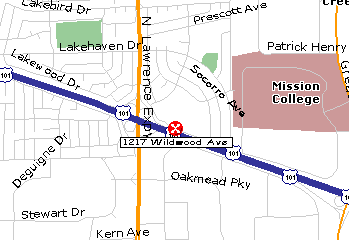|
|
|
 | ||
|
| ||
 Thursday, March 22, 2007
Thursday, March 22, 2007
|
|
Register & Prepay for lunch ($15) in one step from your PayPal account or Credit Card! |
PLEASE RESERVE IN ADVANCE --

This talk will describe a new interconnect approach, MicroCoax, based around wire bonding, with the capability to create high-bandwidth interconnects for increasingly higher frequency digital and analog electronics systems. Prototype devices show excellent performance over DC-100+ GHz frequency range. Transmission line losses less than 0.5 dB, 160 Ám pitch, and cross-talk isolation of approximately 40-50 dB from DC-50 GHz were demonstrated. The technology has implications for improved package design, and these design implications will be discussed. Applicable to printed circuit board, as well as device-level interconnects, this MicroCoax technology allows data signals to flow over large frequency ranges with excellent impedance match and little cross-talk. The fabrication approach uses existing infrastructure within the microelectronics fabrication arena, allowing for easy adoption. The presentation will show how MicroCoax can have significant impact for systems with high bandwidth and signal integrity demands.
He started out at Exxon Research working on flat panel displays based on electrophoresis. At NovaSensor he was primarily responsible for novel devices such as microrelays, force rebalanced accelerometers, vibrating beam pressure sensors, and ion/electron beam lithography mask membranes. At Teknekron Sensor Development Sean managed the Micromachining group. This group supported the company's efforts in pioneering chemical and biosensor platforms as well as developed novel mechanical sensors and microstructures. Examples of such devices include a microheater used for catalytic gas sensing, NDIR gas sensors, high dynamic range capacitive pressure sensors, SFM (scanning force microscope) probe tips which were the sharpest available, and frequency selective earthquake detectors.
After co-founding two product-based MEMS startups, Sean was recruited by Maxim Integrated Products to establish their MEMS fabrication facility and helped create their patented media-compatible pressure sensor technology. Sean has served in consulting, advisory, and board member capacities at several Silicon Valley MEMS companies. He holds 21 US Patents for micromachined devices addressing many industries including automotive, process control, semiconductor, medical, and communications fields.
|
SCV Chapter
Home Page |
How to Join IEEE |
Contact our Chapter Chair |
| CPMT Society
Home Page |
IEEE Home Page |
Email
to Webmaster |
Last updated on